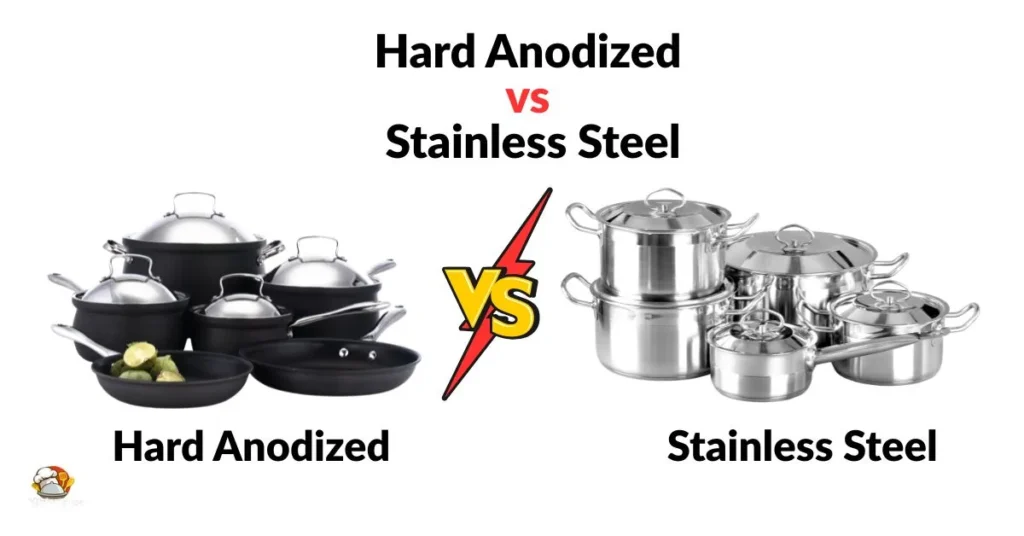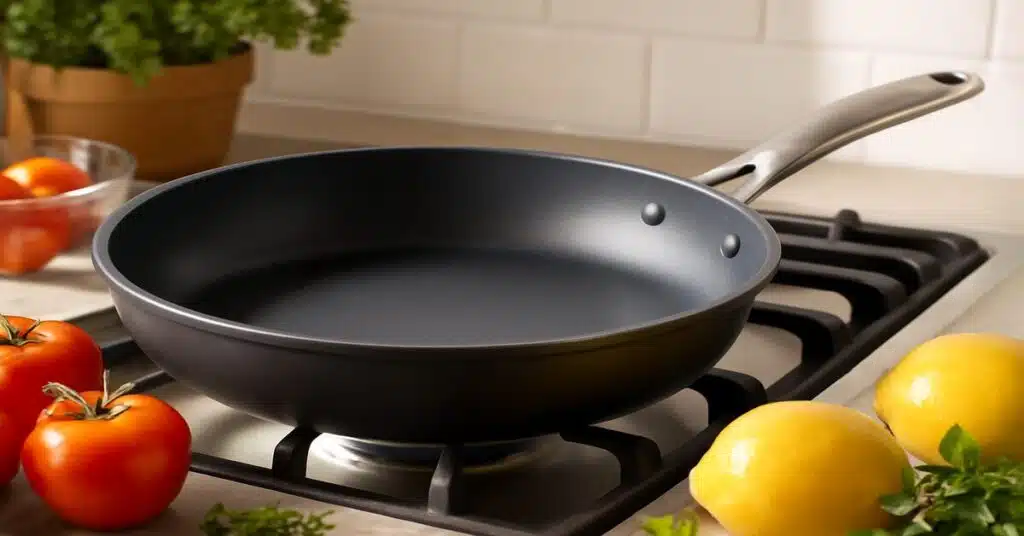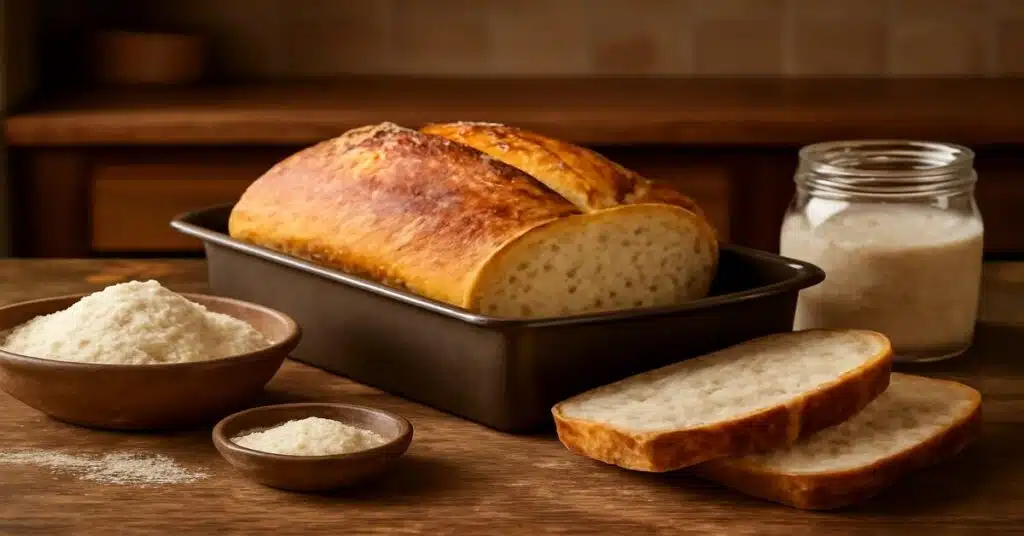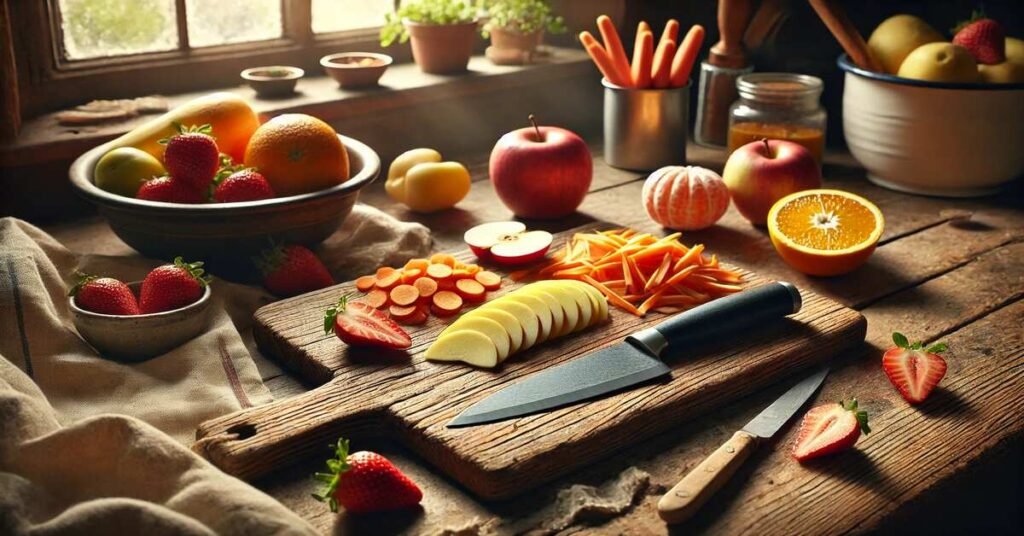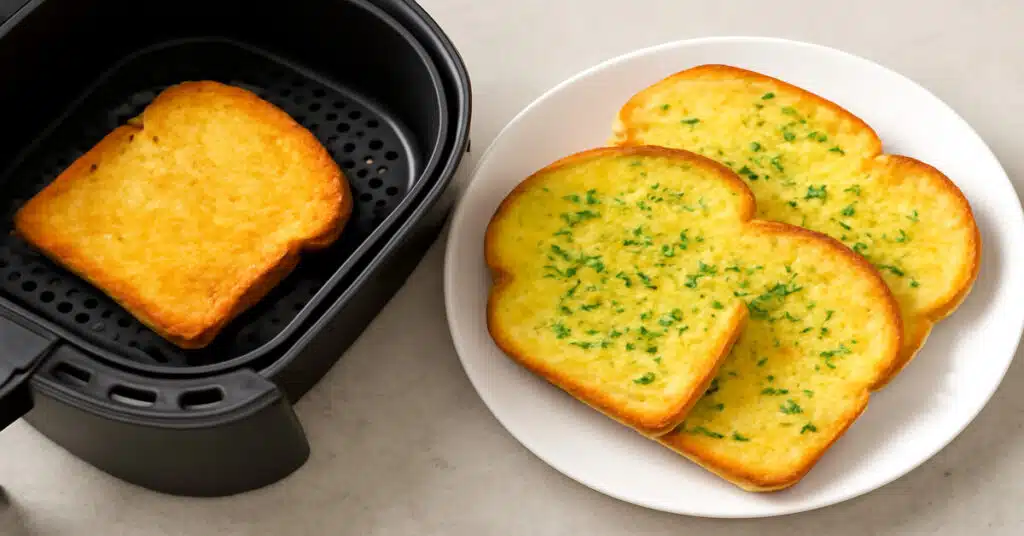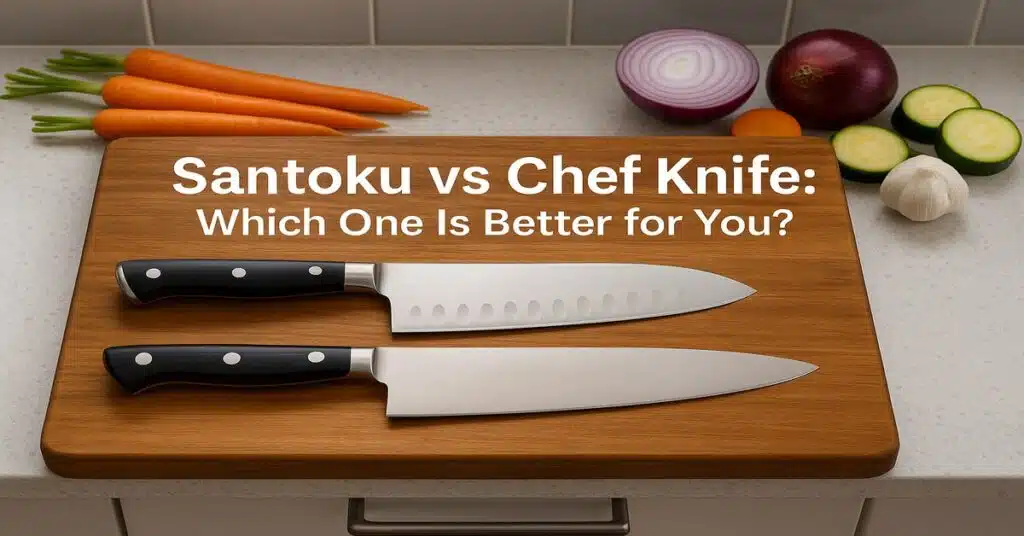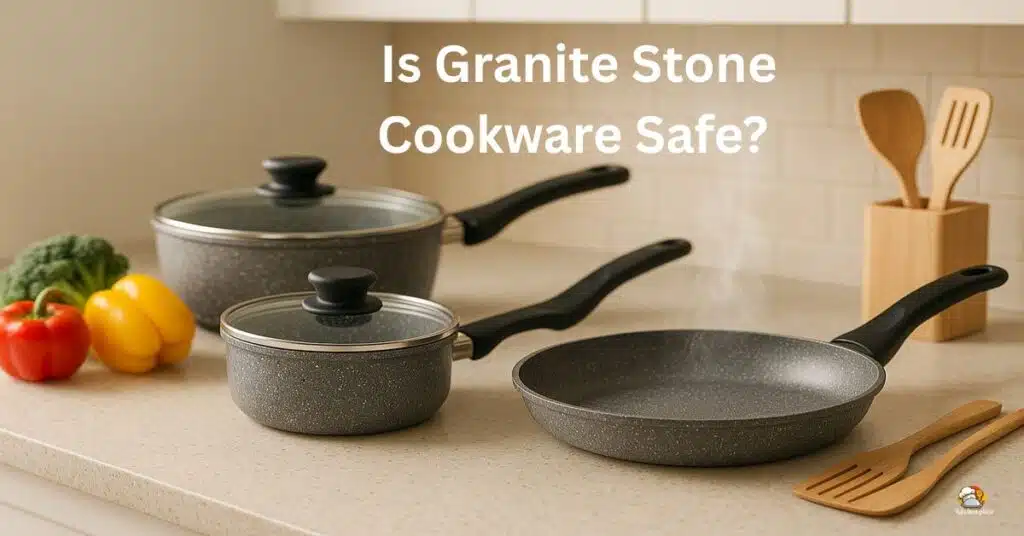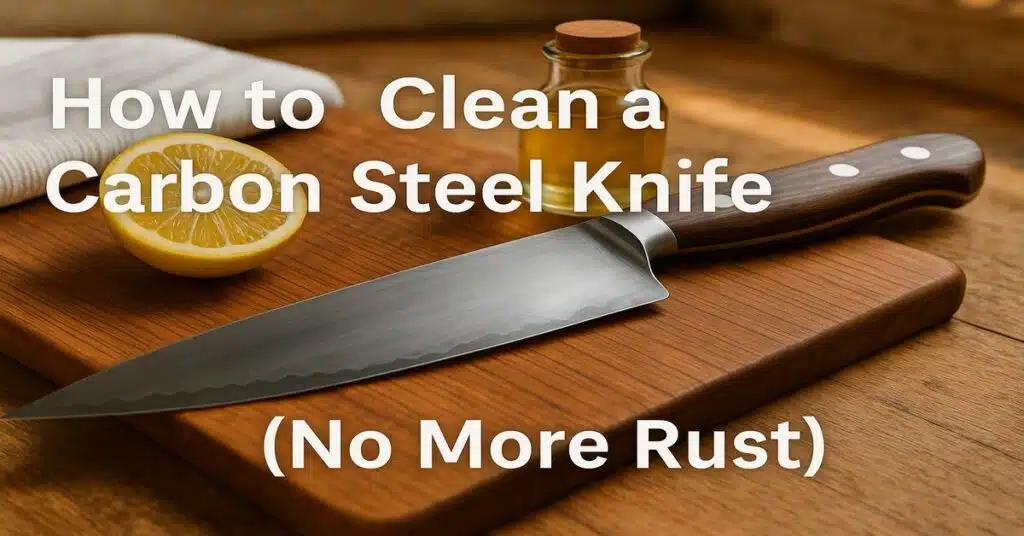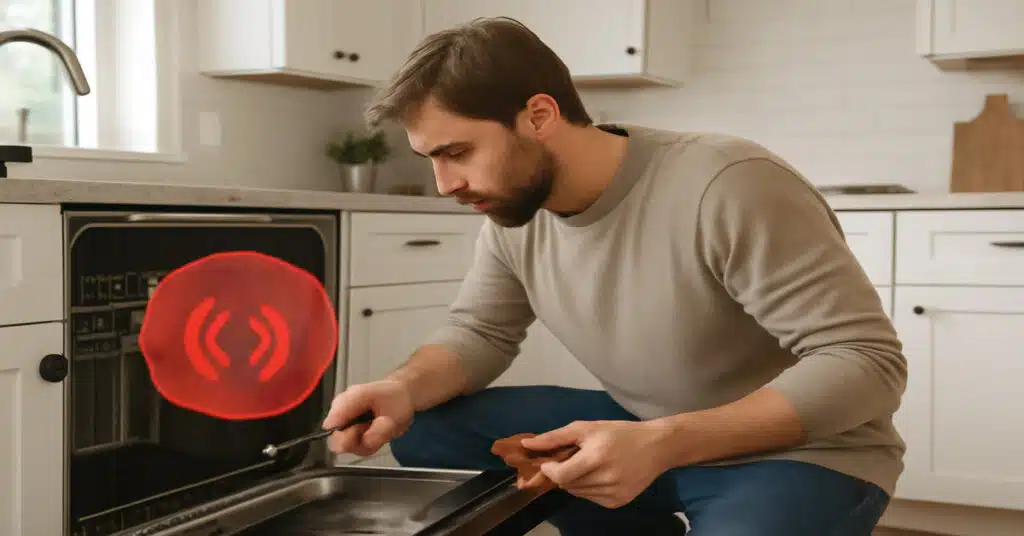Choosing between hard anodized and stainless steel cookware is one of the most common kitchen dilemmas. I’ve cooked with both—Calphalon anodized pans for daily nonstick meals and All-Clad stainless steel for high-heat searing—so I know exactly where each performs best.
Quick Answer:
- Pick Hard Anodized if you want affordable nonstick, even heating, and easy cleaning. Average lifespan: 5–10 years.
- Pick Stainless Steel if you want pro-level searing, induction compatibility, and cookware that lasts for decades.
Both are FDA-safe cookware options, but the better choice depends on your cooking style, budget, and how long you want your set to last.
👉 Still choosing a set? Read my full guide: Best Hard Anodized Cookware 2025.
Now that you know the quick verdict, let’s dive deeper into each cookware type—starting with hard anodized.
What is Hard Anodized Cookware?
Hard anodized cookware is aluminum that goes through an electrochemical process (Wikipedia Anodizing) to make it stronger than stainless steel, scratch-resistant, and naturally nonstick.
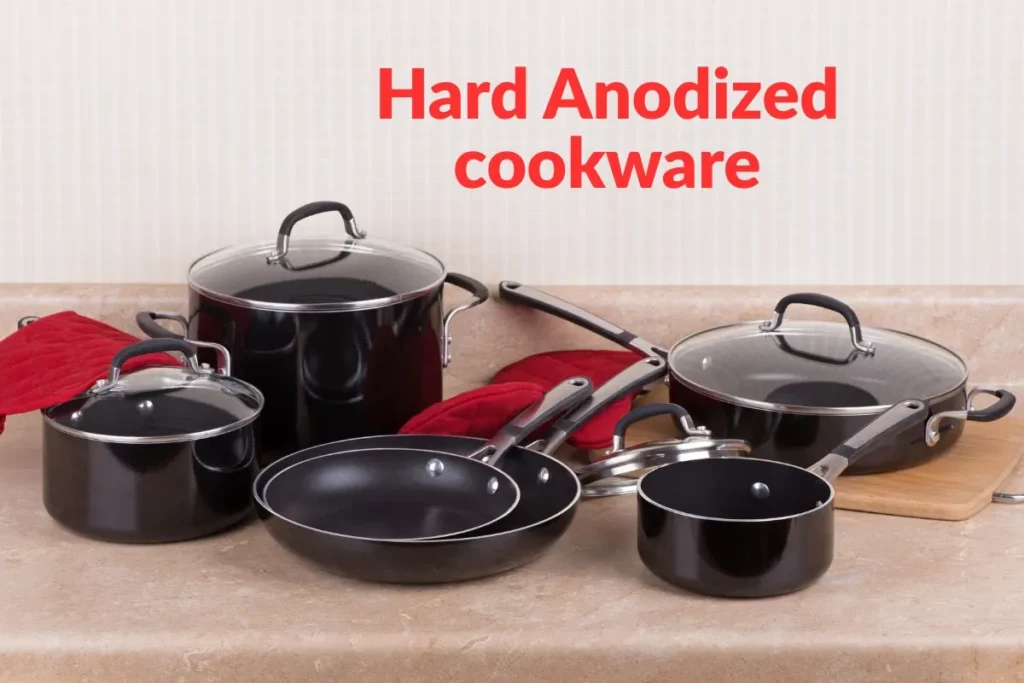
Because the surface is sealed, it does not react with acidic foods like tomatoes or lemon juice. Modern anodized cookware from brands such as Calphalon, T-fal, and Anolon is PFOA-free and FDA-approved, so it is safe for daily cooking.
Here are the key features:
- Lightweight: Easier to lift and move compared to heavy stainless steel pans.
- Nonstick Performance: Great for eggs, pancakes, and other quick meals.
- Care Needs: Best cleaned by hand. Avoid bleach or steel wool to protect the coating.
👉 Want to know the full strengths and weaknesses? Read my detailed guide: Is Hard Anodized Cookware Safe?
While hard anodized is known for its nonstick convenience, stainless steel cookware brings a very different set of strengths. Let’s break it down.
What is Stainless Steel Cookware?
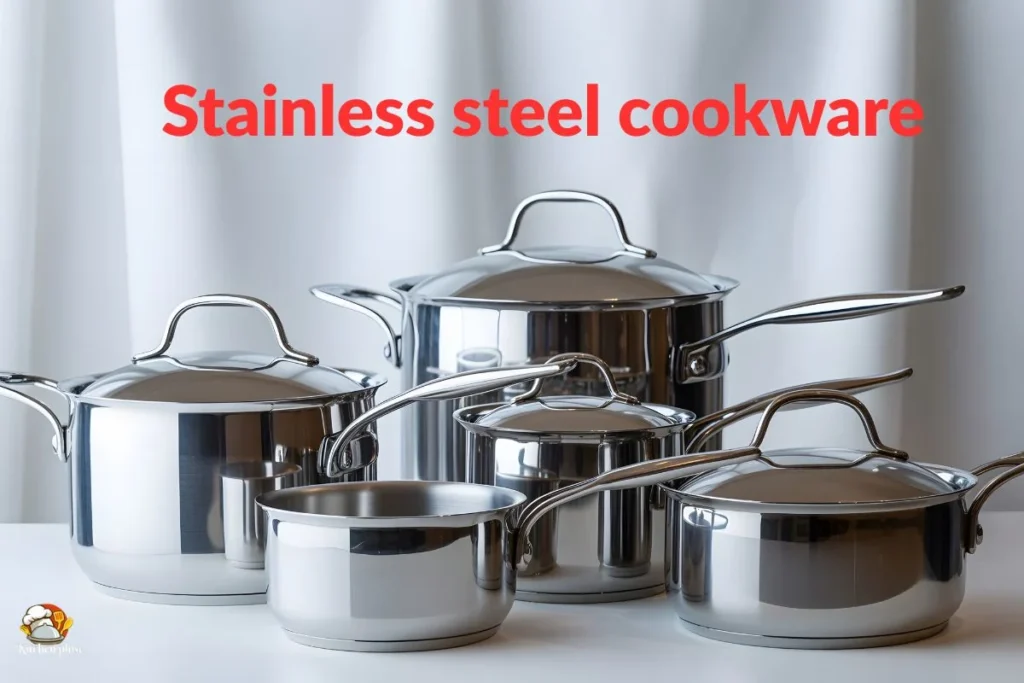
Stainless steel cookware is made from 18/10 stainless steel (Britannica – Stainless Steel) or tri-ply construction with an aluminum core, giving it strength, durability, and even heat distribution.
Because it has no coating, stainless steel is safe to use with acidic foods like tomato sauce and lemon juice. High-quality brands such as All-Clad, Cuisinart, and Tramontina offer sets that can last for decades and often come with lifetime warranties.
Here are the key features:
- No Coating: Food-safe and non-reactive when made with high-grade steel.
- Durability: Can last a lifetime with proper care.
- Care: Dishwasher safe, though light seasoning helps create a natural nonstick layer.
Now that you know the basics of both cookware types, let’s put them side by side and see how they really compare.
Key Differences at a Glance
Here’s a quick side-by-side comparison of hard anodized vs stainless steel cookware:
| Feature | Hard Anodized Cookware | Stainless Steel Cookware |
| Material | Aluminum base with anodized nonstick surface | 18/10 stainless steel or tri-ply layers |
| Heat Performance | Fast, even heating with fewer hot spots | Slower to heat but retains heat longer |
| Nonstick | Naturally nonstick, needs less oil | Not nonstick—requires seasoning or cooking oil |
| Induction | Works only if stainless base is added (some Calphalon models) | Most premium sets are induction-ready (All-Clad, Cuisinart) |
| Durability | Average lifespan 5–10 years | Can last decades with lifetime warranties |
| Cleaning | Hand wash only, avoid bleach/steel wool | Dishwasher safe; seasoning improves food release |
| Safety | PFOA-free coating; safe if surface not damaged | No coating, safe for acidic foods if high grade steel |
| Price | Budget to mid-range (T-fal, Circulon) | Premium pricing (All-Clad, Made In) |
| Best For | Beginners, students, busy families | Pro-level cooks, induction users, long-term investment |
Hard anodized costs less upfront and is easier to clean, while stainless steel costs more but lasts a lifetime.
👉 For a deeper breakdown of the best anodized cookware options, check my full guide: Best Hard Anodized Cookware 2025.
The comparison table gives you a quick overview, but how do these materials actually perform while cooking? Let’s break it down by heat, searing, and daily use.
Heat & Cooking Performance
Nonstick vs Stick Cooking:
Hard anodized cookware is naturally nonstick, which makes it perfect for eggs, pancakes, and delicate fish. You need very little oil, and cleanup stays simple.
Stainless steel pans, unless seasoned, are more likely to stick. However, once you master the technique, they reward you with excellent flavor and browning.
High-Heat Searing & Browning:
For steak, stir-fry, and golden browning, stainless steel wins every time. It can handle higher heat without damage, giving professional searing results.
Which is better for searing steak?
Stainless steel cookware handles very high heat and delivers restaurant-quality browning, making it the best choice for steak.
Hard anodized cookware performs best at medium to medium-high heat. Using very high heat can shorten its lifespan and affect the nonstick surface.
Heat Distribution & Hot Spots:
Both materials distribute heat evenly, but the experience is slightly different:
- Hard Anodized: Heats up faster, making it ideal for quick meals.
- Stainless Steel: Takes longer to heat, but retains heat longer, which is useful for sauces or multi-step recipes.
Quick Verdict:
Choose hard anodized for fast, nonstick daily cooking. Pick stainless steel for pro-level searing and long-lasting heat retention.
While these features explain how each cookware performs in theory, I also tested both in real cooking. Here are the results from eggs, steak, and sauce tests.
Real-Life Cooking Tests (Egg, Steak & Sauce)
I tested Calphalon hard anodized and All-Clad stainless steel cookware in real cooking situations. The results were clear.
Egg Test (Nonstick Performance)
- Hard Anodized: Eggs and pancakes slide out easily with very little oil. Cleanup takes only seconds.
- Stainless Steel: Without seasoning, eggs stick quickly. With seasoning, performance improves, but it takes practice.
Verdict: For eggs and pancakes, hard anodized cookware is the clear winner.
👉Cleanup takes just a few seconds — and if you want a full step-by-step guide, check my article on How to Clean Hard Anodized Cookware.
Steak Test (High-Heat Searing)
- Hard Anodized: Works well at medium to medium-high heat. At very high heat, the coating may wear faster.
- Stainless Steel: Handles extreme heat without damage. Perfect for steak, stir-fry, and pro-level browning.
Verdict: For steak and high-heat searing, stainless steel cookware wins.
Tomato Sauce Test (Acidic Foods Reactivity)
- Hard Anodized: The electrochemical seal prevents aluminum from reacting. But if scratched, safety and durability decrease.
- Stainless Steel: High-quality 18/10 stainless steel is completely safe with acidic foods like tomato or lemon. Low-grade steel may cause a slight metallic taste.
Verdict: For sauces and long-term acidic cooking, stainless steel is more reliable.
Quick Comparison Table:
| Test Type | Hard Anodized Result | Stainless Steel Result | Best Choice |
| Egg Test | Naturally nonstick, easy cleanup | Sticks unless seasoned | Hard Anodized |
| Steak Test | Works up to medium-high heat | Handles very high heat, pro-level sear | Stainless Steel |
| Sauce Test | Safe if coating is intact | Always safe with 18/10 stainless steel | Stainless Steel |
Pick hard anodized cookware for eggs, pancakes, and quick daily meals.
Pick stainless steel cookware for steak, sauces, and long-term durability.
Now that we’ve seen how these cookware types perform in cooking tests, let’s talk about safety and food reactivity—one of the most common concerns for buyers.
Safety & Reactivity (What You Need to Know)
Hard Anodized Cookware:
- Made with an electrochemically sealed aluminum base, which prevents metal from mixing with food.
- Modern brands are PFOA-free and FDA-approved, so they are safe for daily cooking.
- The main risk happens if the nonstick layer gets scratched. This reduces safety and shortens lifespan.
👉For a complete breakdown of safety factors, check my detailed guide: Is Hard Anodized Cookware Safe?
Stainless Steel Cookware:
- Has no chemical coating, which makes it naturally safe and long-lasting.
- High-quality 18/10 stainless steel does not react with food, even when cooking acidic recipes like tomato sauce.
- Lower-grade steel may react with tomatoes, lemon, or vinegar, sometimes leaving a metallic taste.
Induction & Oven Safety
Stainless Steel Cookware:
- Most stainless steel cookware sets are induction-ready by default.
- Popular brands like All-Clad, Cuisinart, and Tramontina are trusted for reliable induction performance.
- Stainless also handles very high oven temperatures (600°F or higher)—perfect for roasting or broiling.
Hard Anodized Cookware:
- Standard hard anodized pans do not work on induction stoves.
- They only work if the base includes a stainless steel induction plate (available in some Calphalon and Circulon models).
- Most brands are oven safe up to 400–500°F, which works for daily cooking but not extreme high-heat broiling.
Can you use hard anodized cookware on induction?
Only if the pan has a stainless steel base. Standard anodized cookware will not work on induction cooktops.
Now that we’ve covered safety, let’s look at how long each cookware type really lasts—and how the warranties compare to real-life performance
Durability & Warranty vs Real Life
Hard Anodized Cookware:
- Average Lifespan: 5–10 years.
- Nonstick coating wears out over time, especially with high heat or dishwasher use.
- Brands like Calphalon and T-fal usually offer limited warranties, but real-life use shows a shorter span.
👉Some people also compare anodized with cast iron since both focus on durability but work very differently. I’ll cover that in detail in my upcoming guide on Hard Anodized vs Cast Iron Cookware.
Stainless Steel Cookware:
- Average Lifespan: Decades, often 20+ years.
- Backed by lifetime warranties from brands like All-Clad and Cuisinart.
- No coating to wear off, making it the long-term investment choice.
Warranty vs Real Lifespan (Comparison Table)
| Brand | Type | Warranty | Real Lifespan |
| Calphalon | Hard Anodized | 10 years | 7–8 years |
| T-fal | Hard Anodized | Limited | 5–7 years |
| All-Clad | Stainless Steel | Lifetime | 20+ years |
| Cuisinart | Stainless Steel | Lifetime | 15–20 years |
👉Another common comparison is anodized vs granite cookware, especially for long-term safety and lifespan. I’ll publish a separate guide on this soon.
Which cookware lasts longer: hard anodized or stainless steel?
Hard anodized cookware lasts about 5–10 years, while stainless steel can last 20+ years with proper care.
Quick Verdict:
Hard anodized works as a mid-term choice (5–10 years), while stainless steel is a long-term investment that lasts for decades.
After durability and warranties, the next big concern is how easy each cookware type is to clean and maintain in daily life.
Cleaning & Maintenance
Hard Anodized Cookware:
- Cleaning: Best washed by hand with mild dish soap and a soft sponge.
- Avoid: Bleach, steel wool, harsh detergents, or leaving pans to soak overnight—these can scratch or weaken the coating.
- Care Tip: Always dry with a towel after washing to prevent water spots and keep the surface looking new.
👉 For a full guide with step-by-step methods, read my article: How to Clean Hard Anodized Cookware.
Stainless Steel Cookware:
- Cleaning: Most sets are dishwasher safe, but hand washing helps keep their shine longer.
- Seasoning Tip: Seasoning stainless steel pans adds a natural nonstick layer—perfect for eggs or pancakes.
- Scrubbing: For burnt or stuck food, use a nylon brush or a safe cleanser like Bar Keepers Friend.
Cleaning & Maintenance – Side by Side
| Cookware Type | Best Cleaning Method | Avoid | Extra Tip |
| Hard Anodized | Hand wash with mild dish soap and a soft sponge | Bleach, steel wool, harsh detergents, soaking overnight | Dry with a towel after washing to prevent water spots |
| Stainless Steel | Dishwasher safe (though hand washing keeps shine longer) | Strong bleach or abrasive cleaners | Season lightly for a natural nonstick effect |
👉Some people also compare hard anodized with regular nonstick cookware, especially when it comes to daily cleaning and care. I’ll cover that in detail soon in my Hard Anodized vs Nonstick Cookware guide.
Which cookware is easier to clean: hard anodized or stainless steel?
Hard anodized cookware is easier for daily cleaning because it has a naturally nonstick surface, but it requires gentle hand washing. Stainless steel is dishwasher safe and more forgiving, but food can stick unless you season it.
Quick Verdict:
- Hard anodized cookware: easier for daily cleaning, but needs gentle care.
- Stainless steel cookware: more forgiving, dishwasher safe, and improves with seasoning.
After cleaning and care, another big factor is how much these cookware sets cost and how heavy they feel in daily use.
Price & Weight Comparison
Price:
Hard Anodized Cookware
- Usually in the budget to mid-range category.
- Brands like T-fal and Circulon sell full sets at a lower cost.
- Great for families, students, or anyone starting out.
Stainless Steel Cookware
- Falls in the premium range.
- Brands like All-Clad and Made In are more expensive.
- Higher price, but built for long-term durability.
Hard anodized costs less upfront, while stainless steel costs more but lasts much longer.
Weight:
Hard Anodized Cookware
- Medium weight.
- Lighter than stainless steel but heavier than standard aluminum nonstick pans.
- Easy to handle for everyday cooking.
Stainless Steel Cookware
- Heavier, especially tri-ply or 5-ply steel construction.
- Solid and stable on the stove, but harder to lift for some people.
Cast Iron (Reference Point)
- Heaviest of all cookware.
- Much heavier than both anodized and stainless.
Comparison Table:
| Cookware Type | Price Range | Weight | Best For |
| Hard Anodized | Budget to mid-range (T-fal, Circulon) | Medium | Families, beginners, daily use |
| Stainless Steel | Premium (All-Clad, Made In) | Heavy | Pro cooks, induction stoves, lifetime buyers |
| Cast Iron (Ref.) | Low–Mid | Very Heavy | Slow cooking, roasting |
Which cookware is more affordable: hard anodized or stainless steel?
Hard anodized cookware is usually budget to mid-range (brands like T-fal, Circulon). Stainless steel is premium (brands like All-Clad, Made In) but lasts much longer.
Which cookware is heavier: hard anodized or stainless steel?
Hard anodized is medium weight—lighter than stainless but heavier than standard aluminum. Stainless steel is heavier, especially in tri-ply or 5-ply sets, and feels more solid on the stove.
Quick Verdict:
Pick hard anodized if you want easier handling. Choose stainless steel if you want solid, long-lasting cookware, even if it’s heavier.
👉Want a full breakdown of budget vs premium cookware choices? Stay tuned for my upcoming guide: Best Budget vs Premium Cookware 2025.
Now that we’ve compared prices and weight, let’s quickly break down the pros and cons of each material side by side.
Pros & Cons Side-by-Side
Hard Anodized Cookware:
✅ Pros
- Affordable (budget to mid-range sets).
- Naturally nonstick → great for eggs, pancakes, and easy meals.
- Even heat distribution → less risk of hot spots.
- Lightweight compared to stainless.
❌ Cons
- Coating wears off after 5–10 years.
- Requires hand washing (not dishwasher safe).
- Sensitive to harsh cleaners like bleach or steel wool.
👉 Want a full breakdown? Read my detailed guide: Hard Anodized Cookware Pros and Cons.
Stainless Steel Cookware:
✅ Pros
- Extremely durable → can last for decades.
- Dishwasher safe → easy to maintain.
- High heat tolerance → perfect for searing and browning.
- Safe for acidic foods like tomato sauce or lemon juice.
❌ Cons
- Higher upfront price (premium sets like All-Clad, Made In).
- Heavier than anodized → harder to lift for some users.
- Needs seasoning for better nonstick cooking.
Pick hard anodized if you want affordable, nonstick, and lightweight cookware.
Pick stainless steel if you want durability, high-heat cooking, and dishwasher-safe convenience.
We’ve looked at pros and cons, but the best choice also depends on who you are as a cook. Let’s break it down by user type.
Who Should Buy Which? (Buyer Personas)
Choosing between hard anodized and stainless steel cookware depends on your cooking style and daily needs. Here’s a quick guide:
Beginners / Students:
- Best Choice: Hard Anodized
- Why: Affordable, lightweight, and naturally nonstick → less stress for new cooks.
- Tip: Great for dorm rooms, first apartments, and quick everyday meals.
Families (Daily Cooking)
- Best Choice: Hard Anodized
- Why: Heats evenly, easy to clean, low maintenance.
- Tip: Ideal for busy families who cook several times a day.
👉 If you’re a beginner or family cook, check my full guide on Best Hard Anodized Cookware.
Pro-Level Cooks:
- Best Choice: Stainless Steel
- Why: Withstands high heat, perfect for searing steak, stir-fry, and making sauces.
- Tip: Trusted brands like All-Clad and Made In are favorites among chefs.
Induction Users:
- Best Choice: Stainless Steel
- Why: Most stainless sets are induction-ready. Hard anodized only works if it has a stainless base (e.g., some Calphalon or Circulon models).
- Tip: Always check the induction symbol on the box before buying.
Pick hard anodized if you’re a beginner or want easy daily cooking.
Pick stainless steel if you’re a pro, love searing, or cook on induction.
Now that you know which cookware suits different buyers, here’s my personal verdict after using both for years.
Final Verdict – My Experience After Using Both
After years of cooking with Calphalon hard anodized pans and All-Clad stainless steel cookware, here’s what I’ve found:
Hard Anodized Cookware:
- Best for beginners, families, or anyone who wants quick and easy nonstick meals.
- Affordable upfront cost and lighter weight than stainless.
- Needs gentle care (hand wash only) and usually lasts 5–10 years.
Stainless Steel Cookware:
- Perfect for pro-level cooking, high-heat searing, and sauces.
- Induction-ready and safe with all foods, including acidic recipes.
- Heavier and more expensive, but it can last 20+ years with lifetime warranties.
Quick Verdict:
- Pick hard anodized if you want convenience, nonstick cooking, and a budget-friendly set.
- Pick stainless steel if you want durability, induction cooking, and a lifetime investment.
Before wrapping up, here are some of the most common questions people ask about hard anodized vs stainless steel cookware—answered clearly.
If you want convenience, choose anodized. If you want a lifetime investment, choose stainless.
👉 For my top recommendations, check:
- Best Hard Anodized Cookware 2025
- Hard Anodized Cookware Pros and Cons
- Is Hard Anodized Cookware Safe?
Frequently Asked Questions (FAQ)
Which one is better, hard anodized or stainless steel?
Hard anodized cookware is better for affordable, nonstick daily cooking, while stainless steel cookware is better for durability, high-heat searing, and induction cooking.
Is hard anodized cookware safe?
Yes, modern hard anodized cookware is PFOA-free and FDA-approved. It’s safe for daily use unless the nonstick layer is badly scratched.
What are the disadvantages of hard anodized cookware?
The main drawbacks: not always induction-ready, coating wears off over time, and it usually requires hand washing.
Which is healthier, hard anodized or stainless steel?
Stainless steel is considered healthier long term because it has no coating and works with all foods, including acidic dishes.
What is the lifespan of hard anodized cookware?
With proper care, hard anodized cookware lasts about 5–10 years. In comparison, stainless steel cookware lasts for decades.
What are the disadvantages of stainless steel cookware?
Stainless steel can be heavy, more expensive, and food may stick unless you use oil or seasoning.
Which cookware lasts longer?
Stainless steel cookware lasts the longest—often 20+ years with lifetime warranties. Hard anodized usually lasts 5–10 years.
Is hard anodized cookware better than stainless steel?
Hard anodized is better for nonstick convenience and easy cleaning, while stainless steel is better for long-term durability and pro-level cooking.
What is the best cookware for induction stoves in 2025?
Stainless steel cookware is the best for induction stoves in 2025. Premium sets like All-Clad, Cuisinart, and Tramontina are induction-ready, while hard anodized only works if it has a stainless base.
About the Author:
MD Soazim is a cookware enthusiast who has personally tested both hard anodized and stainless steel pans. He shares simple, real-life insights so readers can choose the right cookware without confusion.

